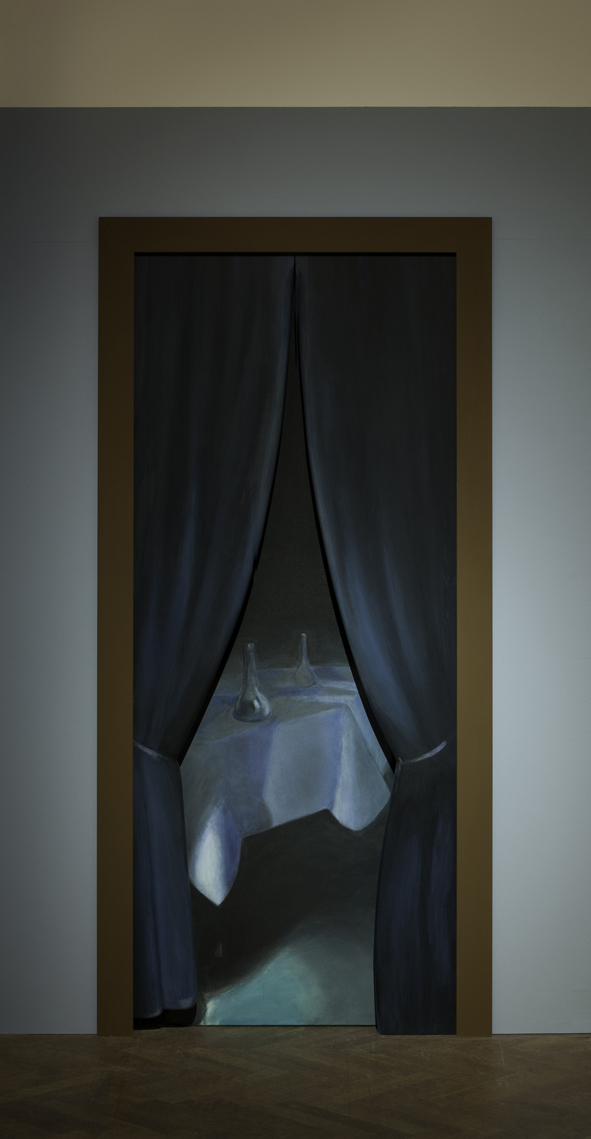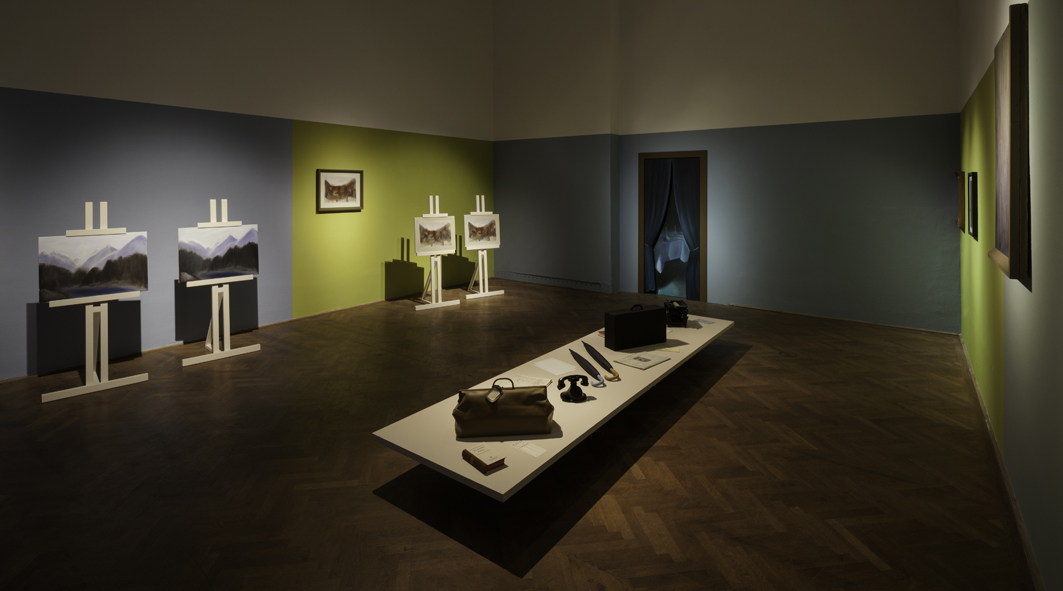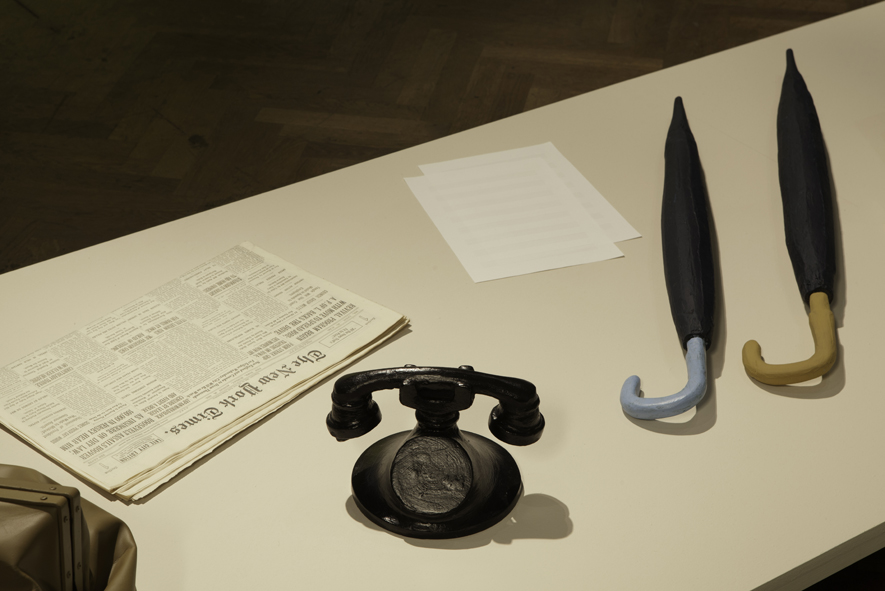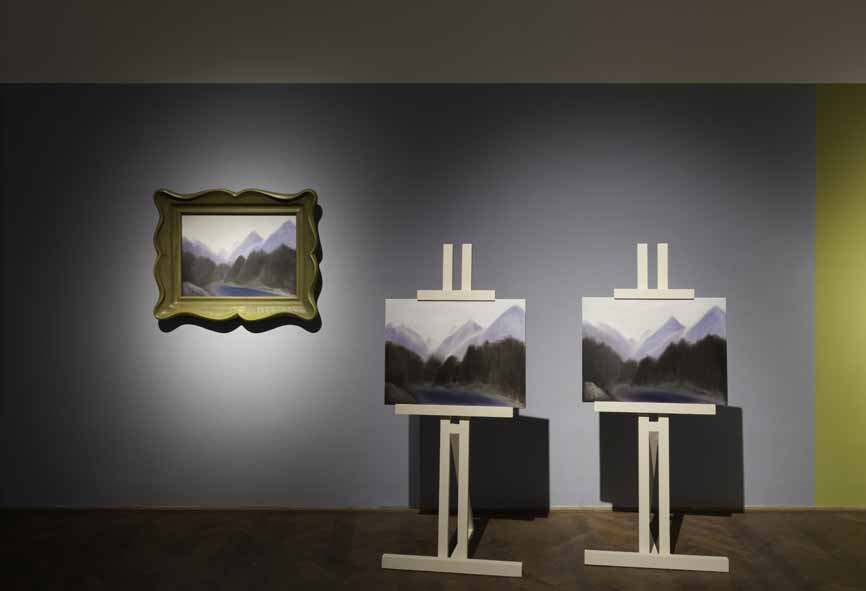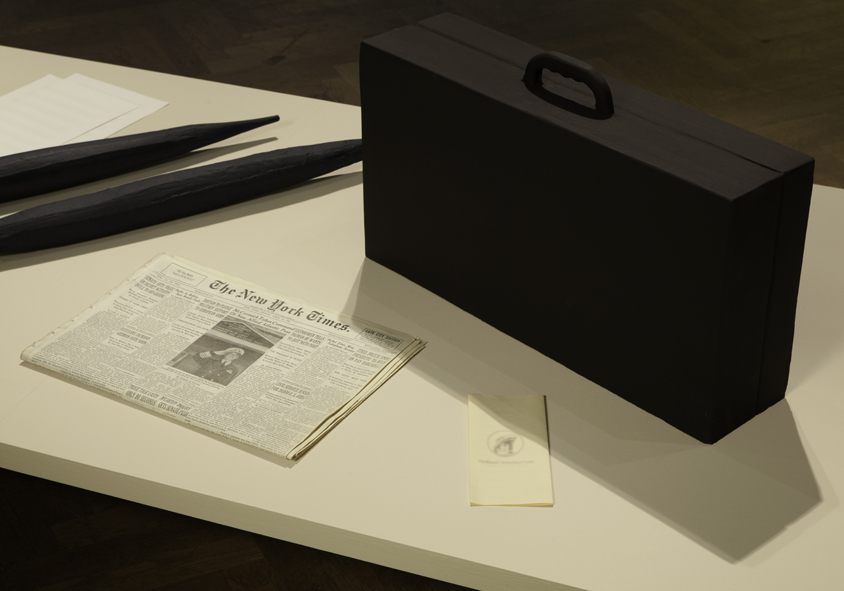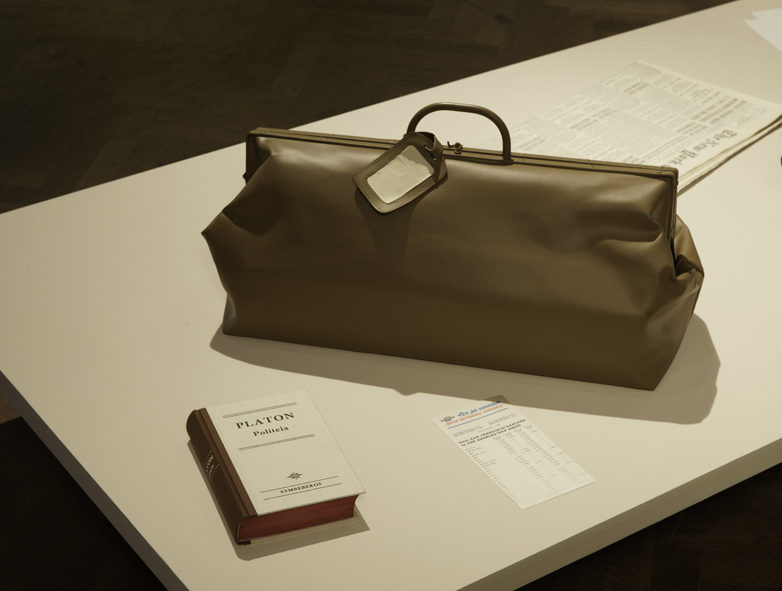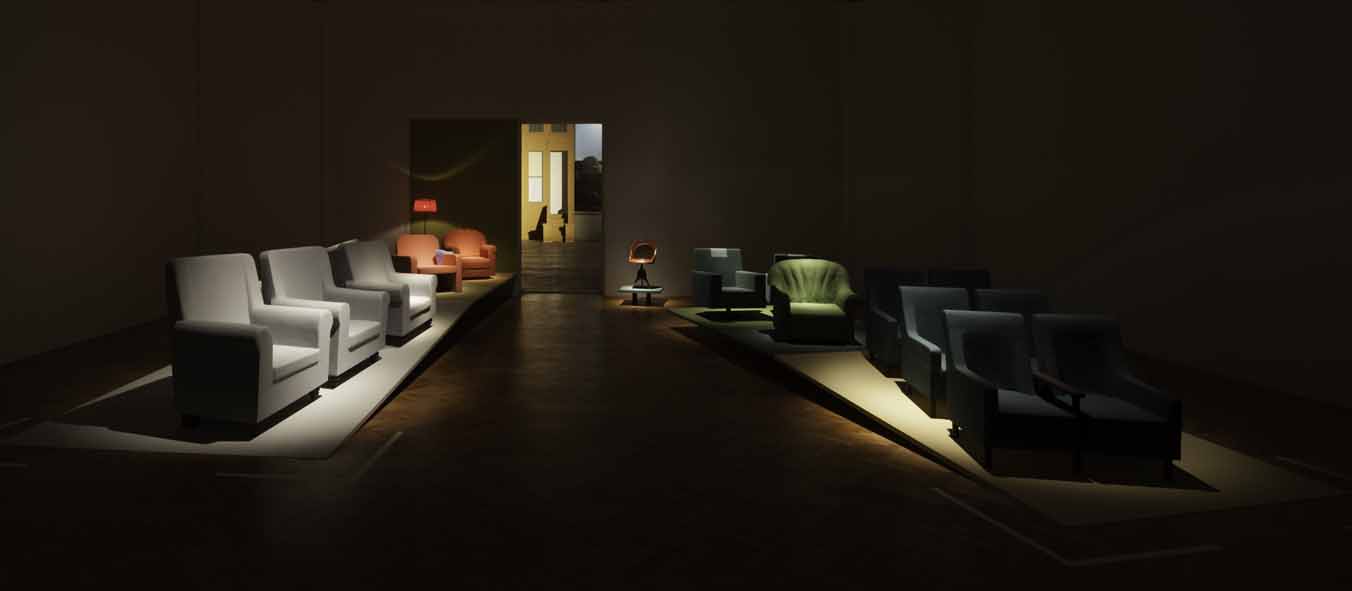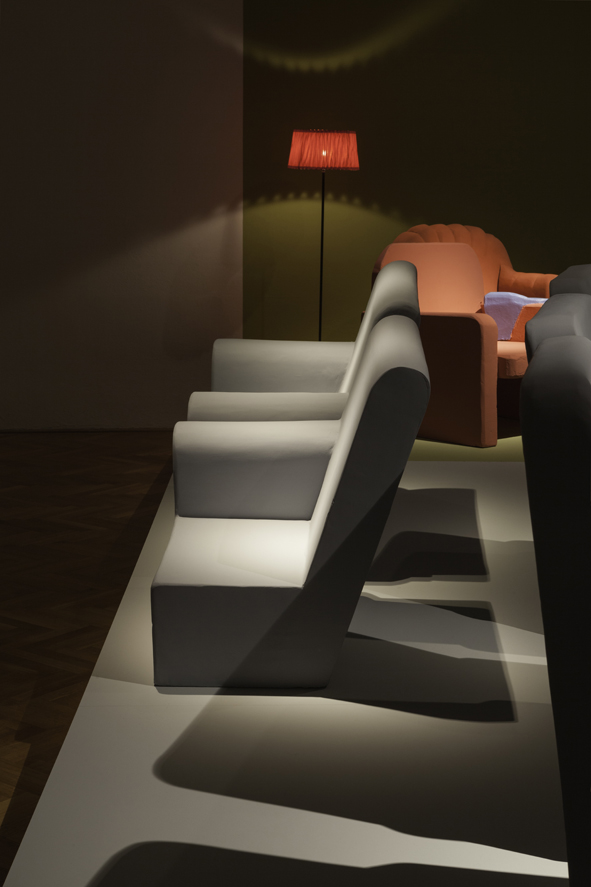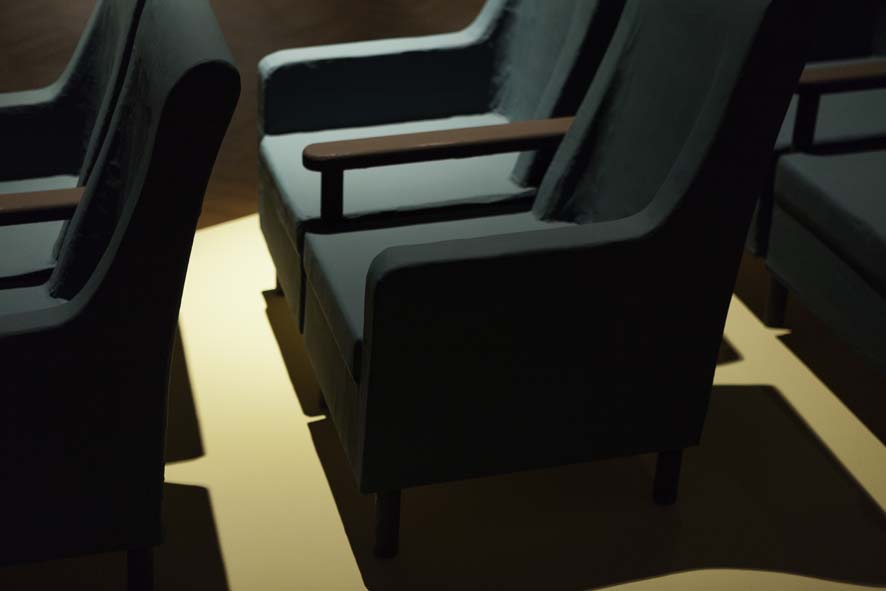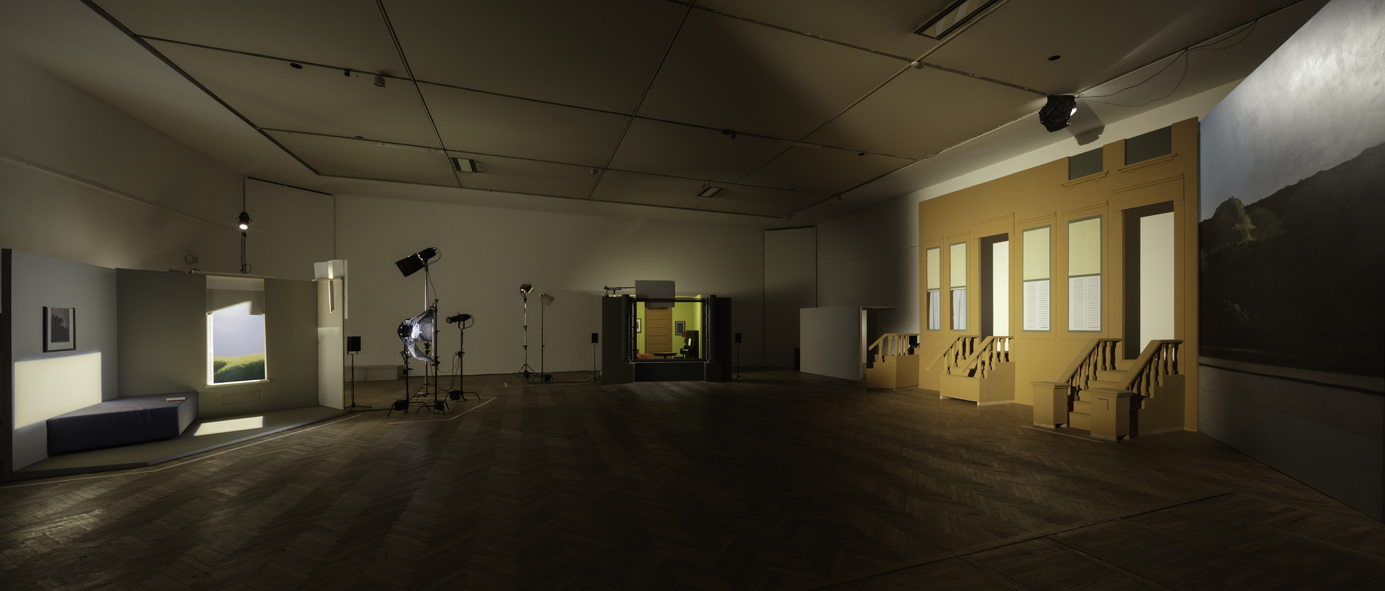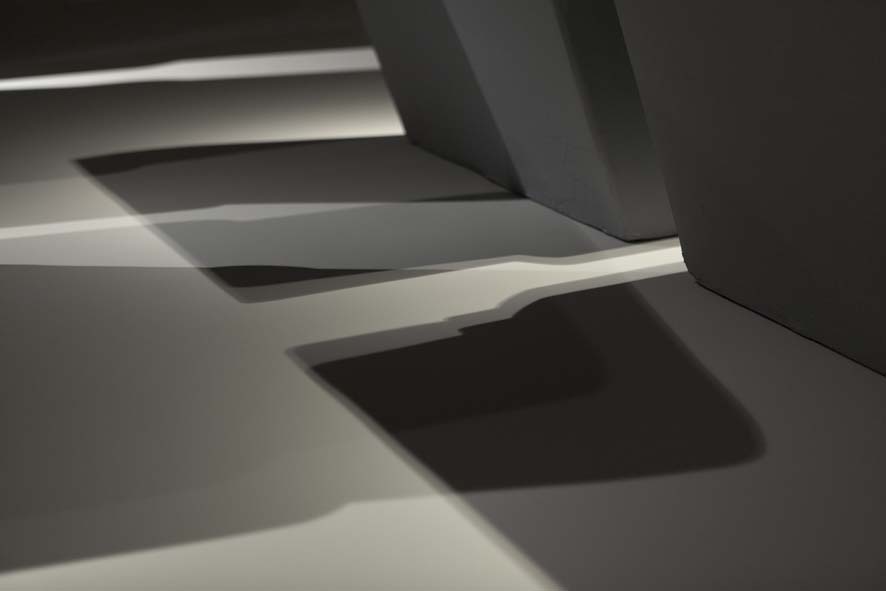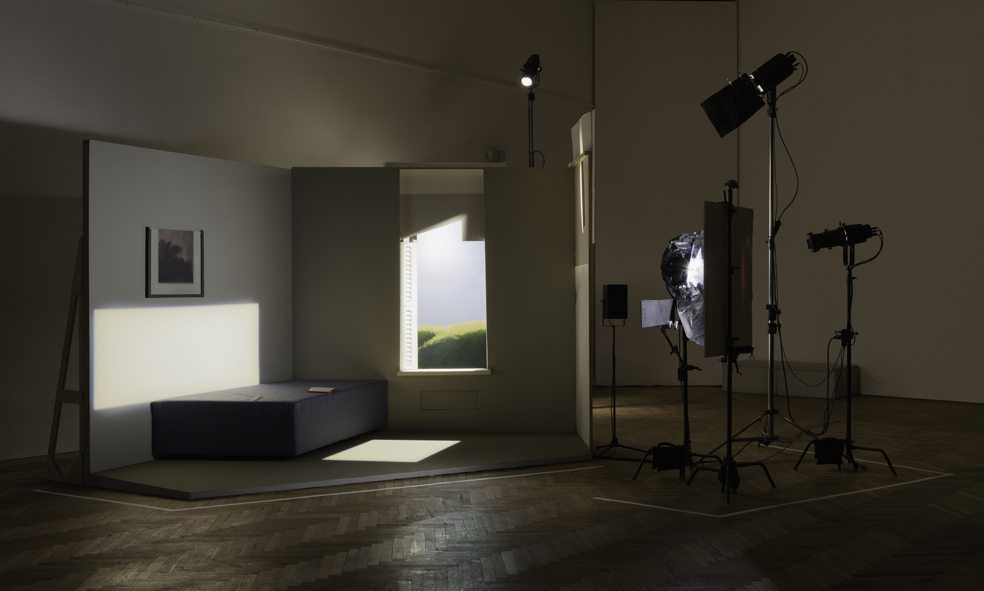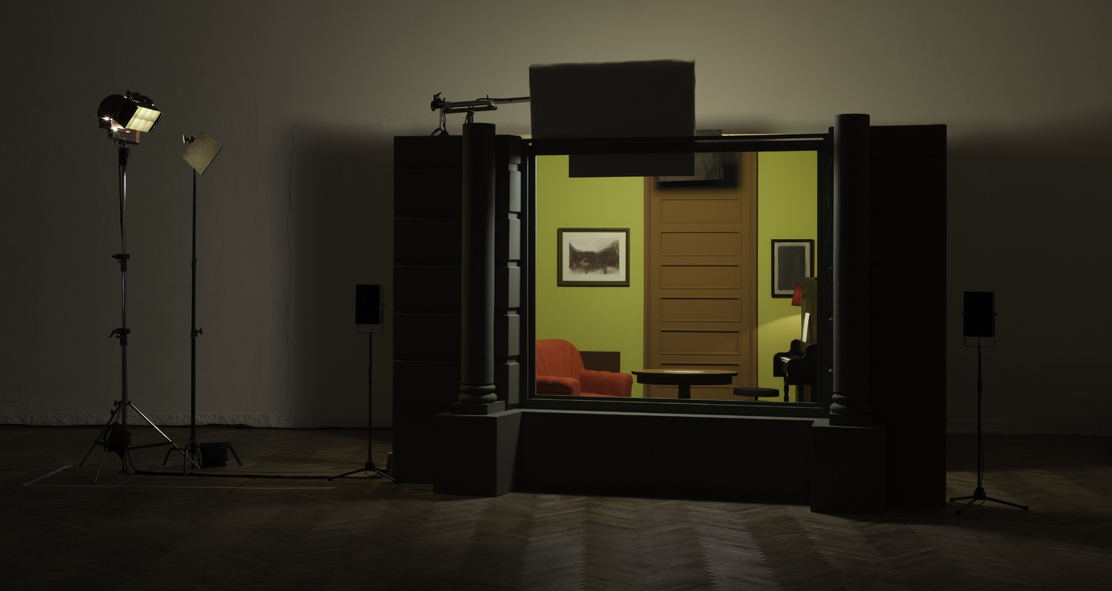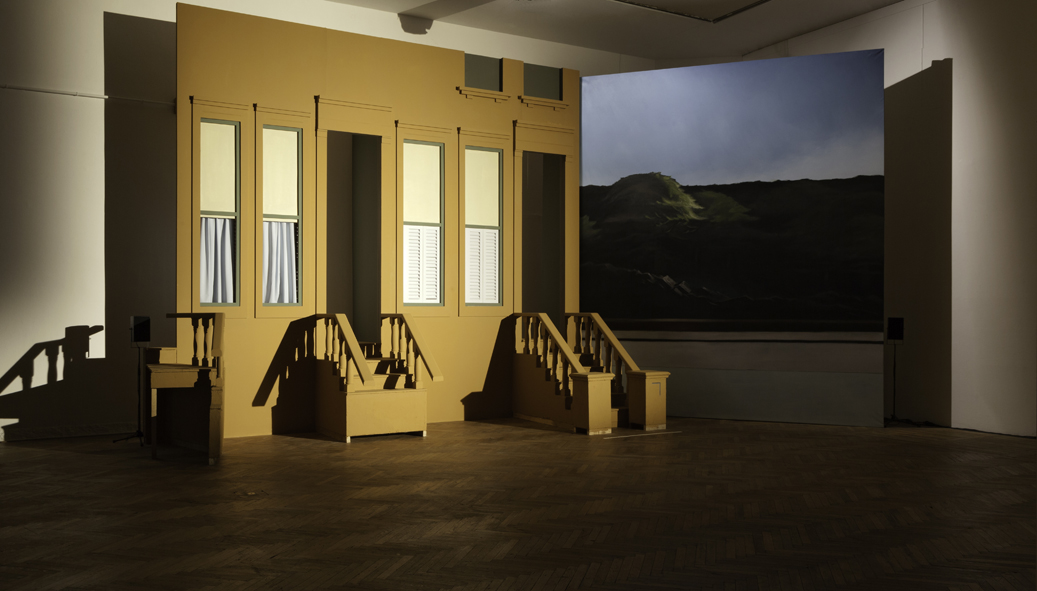Visions of Reality - the exhibition
Visions of Reality, the title of the exhibition as well as the subtitle of the movie SHIRLEY, also refers to the fact that in his works Edward Hopper did not really depict reality but rather combined individual pieces to create a fictional reality, which is a method that is also inherent in the medium of film.
In the course of the three-dimensional life-size transformation of thirteen Hopper paintings for the film, sculptural and scenic artifacts were produced and fitted together into sets to create the illusionistic reality of the film.
In the exhibition these artifacts are detached from their cinematic context and combined into thematic groups that address the staging of reality, and replication and reconstruction in art using the example of Edward Hopper.
Associative slide shows call into question the reciprocal influences and connections between painting, film, architecture, popular culture, illustration and advertising. In a central multi-media installation three reconstructed film sets are illuminated at regular intervals and acoustically emphasized by excerpts from the soundtrack.
Themes of the exhibtion:
Original, copy, replication:
In the era of the unlimited media availability of original works of art via the internet and of the ability to reproduce them mechanically, the question of the meaning of the original work of art and its multiple reproductions and replicas once again becomes an issue. The copy as a separate work of art is thematized by the multiple replication of panel paintings that Edward Hopper depicted in his paintings.
Symbolic objects, artifacts steeped in history:
All the objects, which mostly also have symbolic meaning in Hopper’s paintings, were designed as sculptural objects for the film: umbrellas, suitcases, lamps, telephones, books. A selection of these objects - detached from their filmic contexts - is given new meaning and tells new stories through the arrangements in the exhibition.
Anamorphic and metaphoric furniture:
Edward Hopper reduced his interior decorations to recurring, archetypical elements whose forms and colors give metaphorical meaning to the atmosphere of his paintings: Ominous armchairs, bulky beds, lonely chairs, repellant office furniture. During the three-dimensional reconstruction of these furnishings it became apparent that the objects did not follow any rules of perspective and in some cases turned out to be colossal in size. A selection of anamorphic armchairs and seats produced for the film is presented in new constellations.
Dioramas, panoramas and illusionistic painting:
The diorama and the panorama are predecessors of cinematography and were popular entertainment media of the 19th century and even today are to be found in a multitude of fascinating illusionistic applications: in zoos, natural history museums, botanical gardens, palm and desert houses, shopping malls, theme parks and last but not least in theater and film productions. The large-size landscapes painted for the movie are combined in a diorama arrangement to create a fictional panorama for the exhibition. The visitors can move freely within them, becoming part of the diorama and at the same time remaining outside observers.


